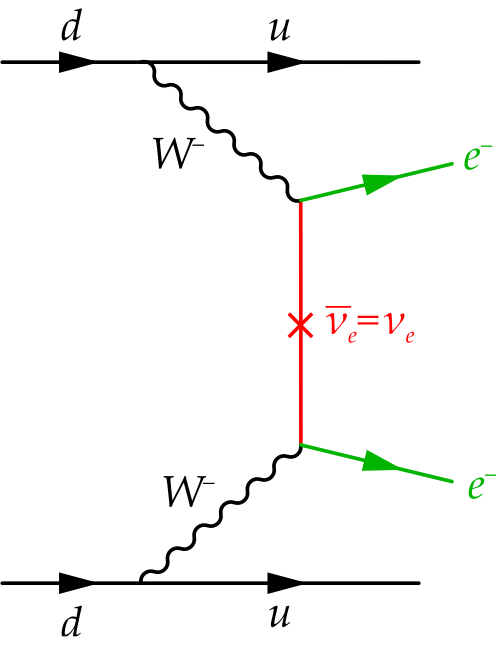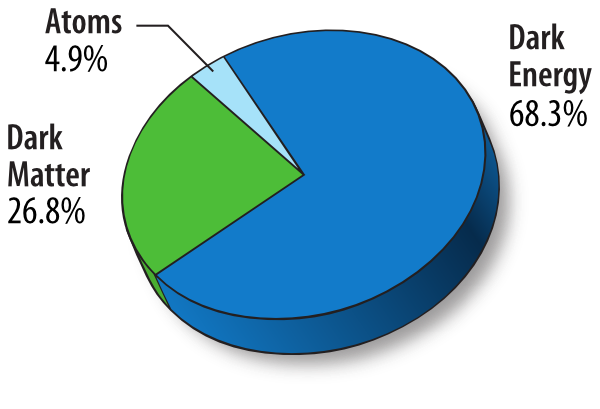Physics
In 1930, Wolfgang Pauli wrote a letter addressed to the "dear radioactive ladies and gentlemen" at a physics conference in Tübingen, Germany. In the letter, he predicted the existence of a new, neutral particle to solve a problem in beta decay experiments. These experiments had found that, counter to expectations, the electrons emitted in beta decays did not carry the full energy of the decays. Pauli, as a "desperate attempt" to explain this apparent violation of energy conservation, postulated that some of the energy of the decay was being carried away by an undetected new particle. Enrico Fermi named this new particle the neutrino, and proposed a full theory of beta decay incorporating this new particle.
The neutrino was observed for the first time 25 years later by Frederick Reines and Clyde Cowan, when they detected antineutrinos from a nuclear reactor. Since then, neutrinos have been the subject of experiments with ever-increasing sensitivity. Experiments have shown that more than one family of neutrinos exist, that neutrinos from different families can change into other another, and that neutrinos have a very small—but nonzero—mass.
Despite the incredible progresses of recent decades, we have not yet been able to measure the masses of the three known families of neutrinos. We know that the masses are different, but we do not know their absolute values, nor which neutrino is the lightest. The relationship between neutrinos and their antiparticles is also mysterious: are they exactly the same, as predicted by Ettore Majorana, or different, like every other known particle? These are the questions that the CUORE experiment is designed to investigate.
Neutrinoless double beta decay

Neutrinoless double beta (0νββ) decay violates the rules of the Standard Model of Particle Physics. Specifically, if the electrons are emitted without neutrinos, this violates lepton number conservation. Any process that violates lepton number conservation (such as 0νββ decay) opens the door to theoretical physics models seeking to explain why there is more matter than antimatter in the universe. Additionally, the observation of 0νββ decay would demonstrate that neutrinos are their own antiparticles and hint at a value for their Majorana mass component.
The challenge
In recent decades, several experiments have searched for 0νββ decay using increasingly advanced technologies. So far, none have seen a clear and reproducible 0νββ decay signal. The next generation of experiments will use ton-scale detectors, with superb energy resolution and exquisitely low backgrounds in the energy region of interest. If observed, the experimental signature would be quite clear but very rare. The signature would be a narrow peak at the energy of the decay, but so rare that we expect to see only a few decays in 5–10 years of data-taking with a ton-scale detector!
The CUORE collaboration has taken up this challenge by studying the 0νββ decay candidate 130Te. In recent years we have built and analyzed data from the prototype bolometric detectors Cuoricino and CUORE-0. The next stage, planned to start operations in 2016, is the largest bolometric detector ever built: CUORE.
Dark matter

Although the primary physics goal of CUORE is to search for neutrinoless double beta decay, the ability to identify and measure low-energy events makes CUORE suitable for low-energy, rare event searches, including a search for dark matter. Indeed, direct detection of dark matter shares many experimental challenges and techniques with neutrinoless double beta decay searches. The main difference between the former and latter is that the energy region of interest for dark matter direct detection is orders of magnitude smaller (on the keV and not MeV scale).
Experiments can search for WIMPs by looking for the nuclear recoils produced by WIMPs interacting with nuclei in the detector material. Since some experiments (in particular the DAMA experiment) have seen a signal compatible with the presence of WIMPs, and others have seen nothing in the same energy region, there is a lively debate on the existence of these particles. Energy thresholds as low as 3 keV have been demonstrated by dedicated measurements of CUORE crystals. With this energy threshold, and lower backgrounds than the predecessor experiment CUORE-0, CUORE is expected to test the WIMP discovery claim of the DAMA experiment with 5 years of data-taking. CUORE will be the first dark matter experiment testing this claim with tellurium, and the results will be complementary to other dark matter direct searches with different target materials.
CUORE will also study another candidate for dark matter: axions. CUORE will focus on axions produced by thermal excitation of 57Fe in the Sun, and interacting in the TeO2 bolometers via the "axio-electric" effect. In this process, which is analogous to the photo-electric effect with the absorption of an axion instead of a photon, an axion is absorbed by an electron and produces a signal with energy of about 14.4 keV. The feasibility of this search was proven using 4 crystals, which allowed to set an upper limit of 0.58 counts per kilogram per day. We expect CUORE to have increased sensitivity to the parameters of interest for axions by at least one order of magnitude with respect to the previous measurement.
